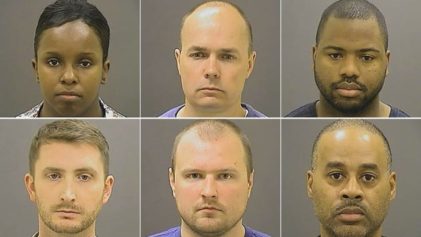The credibility of three Baltimore officers has been called into question, prompting city officials to dismiss more than 30 criminal cases as an investigation into alleged evidence planting continues.
Baltimore State’s Attorney Marilyn Mosby announced Friday, July 28, that over 100 cases are now under review following the release of police body camera footage from a January arrest that appears to show an officer planting drugs at a crime scene, The Baltimore Sun reported. She said 34 of the cases, which were all drug- or gun-related, would be thrown out, while 77 others are still being reviewed.
Twelve other cases were green-lit to move forward.
“Where these officers are material and necessary witnesses, we are dismissing those [34] cases, which rely exclusively on the credibility of these officers,” Mosby said.
The video in question shows officer Richard Pinheiro placing a soup can containing a bag of pills in a trash-strewn lot, then going back to retrieve it. Fellow officers Jamal Brunson and Hovhannes Simonyan witnessed Pinheiro allegedly hiding the drugs.
“I’m gonna go check here,” Pinheiro is heard saying on camera before he returns to the lot, recovers the soup can and removes a plastic bag filled with small white pills. He was swiftly suspended while Brunson and Simonyan were placed on “non-contact” administrative duty.
CNN reported that the Baltimore Police Department’s Internal Affairs division is now investigating possible criminal wrongdoing, while the state’s attorney office is working to determine what role the officers’ testimonies would play in prosecuting cases.
“We have attempted to identify alternative ways to prove those cases where there is independent, corroborative evidence,” Mosby told reporters on Friday.
“As I have stated before, it is incumbent upon us as prosecutors to be the ministers of justice, and to do what’s right in the pursuit of justice, over convictions, while simultaneously prioritizing public safety.”


